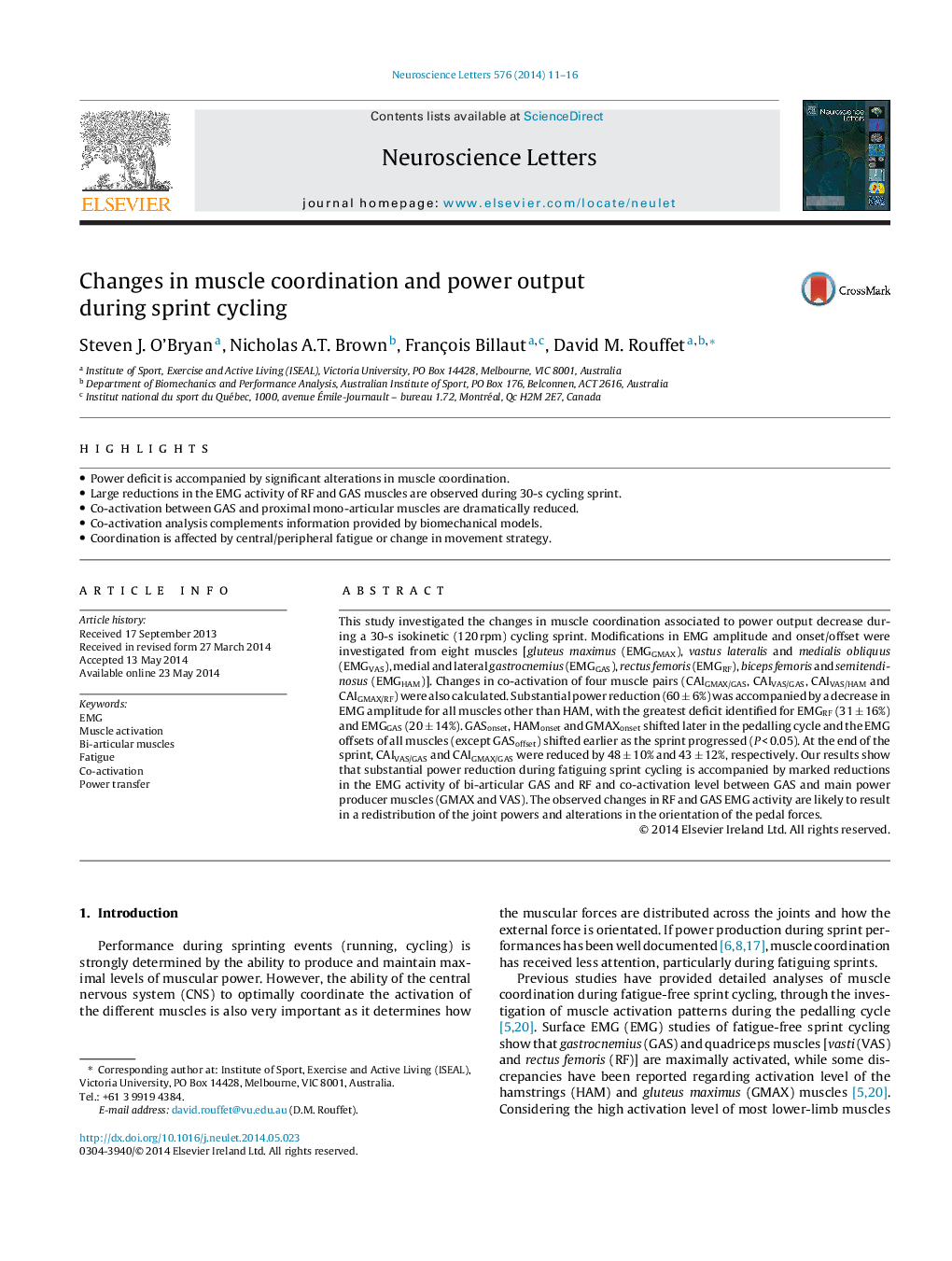| Article ID | Journal | Published Year | Pages | File Type |
|---|---|---|---|---|
| 6281906 | Neuroscience Letters | 2014 | 6 Pages |
â¢Power deficit is accompanied by significant alterations in muscle coordination.â¢Large reductions in the EMG activity of RF and GAS muscles are observed during 30-s cycling sprint.â¢Co-activation between GAS and proximal mono-articular muscles are dramatically reduced.â¢Co-activation analysis complements information provided by biomechanical models.â¢Coordination is affected by central/peripheral fatigue or change in movement strategy.
This study investigated the changes in muscle coordination associated to power output decrease during a 30-s isokinetic (120 rpm) cycling sprint. Modifications in EMG amplitude and onset/offset were investigated from eight muscles [gluteus maximus (EMGGMAX), vastus lateralis and medialis obliquus (EMGVAS), medial and lateral gastrocnemius (EMGGAS), rectus femoris (EMGRF), biceps femoris and semitendinosus (EMGHAM)]. Changes in co-activation of four muscle pairs (CAIGMAX/GAS, CAIVAS/GAS, CAIVAS/HAM and CAIGMAX/RF) were also calculated. Substantial power reduction (60 ± 6%) was accompanied by a decrease in EMG amplitude for all muscles other than HAM, with the greatest deficit identified for EMGRF (31 ± 16%) and EMGGAS (20 ± 14%). GASonset, HAMonset and GMAXonset shifted later in the pedalling cycle and the EMG offsets of all muscles (except GASoffset) shifted earlier as the sprint progressed (P < 0.05). At the end of the sprint, CAIVAS/GAS and CAIGMAX/GAS were reduced by 48 ± 10% and 43 ± 12%, respectively. Our results show that substantial power reduction during fatiguing sprint cycling is accompanied by marked reductions in the EMG activity of bi-articular GAS and RF and co-activation level between GAS and main power producer muscles (GMAX and VAS). The observed changes in RF and GAS EMG activity are likely to result in a redistribution of the joint powers and alterations in the orientation of the pedal forces.
